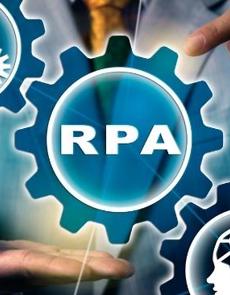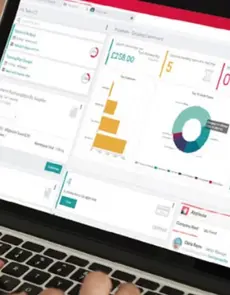The everything guide to switching finance software
Choosing the right finance and accounting software is often a daunting task to think of for any business but it doesn't need to be.
This step by step guide explains everything you need to know when switching finance systems - from considerations before starting the project to implementing your new software. It also includes some handy templates to help you manage your switching project.
Switching finance software doesn't have to be a scary thought
Switching finance and accounting software can provide huge benefits for companies in terms of efficiency, speed and access to insightful information and with an experienced project team on your side, it can be surprisingly painless.
But when you’ve decided that you need new financial software the obvious question is where on earth do you start?
When you begin any new project you get the same feeling as if you were about to start climbing a mountain.
Looking up it seems like you’ll never get to the top but we’re here to tell you that actually, simply putting one foot in front of the other gets you to the top before you know it!
So how do you go about putting one foot in front of the other in terms of switching financial software?
That’s what this guide is all about, giving you an insight into best practices and some of the things you may or may not have thought about.
Chapter 1 Before you start
In part one of our guide, we'll give you the tips you need to make sure your project was properly planned and ready to kick-off.
Don’t swap like for like
This is an early point and for good reason.
You need to go into your implementation project with the mindset that you are not seeking to swap like for like, but instead, you are looking to develop a better solution.
If you have a really slow process in your old finance software, why would you port that completely to a new system?
So whenever you are looking at aspects of your old system to a new setting you need to ask yourself the fundamental question - “is this the best way to do this?”.
Financial systems are a good example of an area where things can get out of hand without us realising it and often we’ll continue to do things the same way simply because that is how they have always been done.
Particularly when you are dealing with finance, it is difficult to rock the boat and so often we tend to muddle along, whilst Access finance software gets further and further away from what the business actually needs.
At every point, you want to examine the process you are looking to replicate and ask why you are doing it and if there is a better way.
Ask yourself what are we trying to achieve? What is the business case for new finance software? What are the expected improvements, savings, efficiencies?
One of the greatest benefits of opting to implement a new solution is that it gives you a natural breakpoint to radically change the way that you approach to finance.
Making the business case
Unless you are paying for new software yourself (or you own the business) it is likely at some point you are going to have to make the business case for a new system.
Remember that from the outside it just looks like a lot of upheaval and expense to make your life easier, which is the hurdle you have to jump to get your project approved.
So if you are sitting in a meeting trying to get a budget and approval for new software over say increasing the marketing budget or buying a new truck, you need to have your ducks in a row.
You can use some of the usual reasons why switching old finance software for a new one is a good idea including:
- You can do more with less - more efficient software means that you can either reduce your headcount or won’t need to recruit as quickly when the business grows
- You can give your customers (internal and external) better service - better software means better information and better data analysis capabilities
- You can improve controls - one that nobody likes to pay for but they wish they had when things go wrong!
- You can improve reporting - better reporting means better decision making...
Chapter 2 Kicking it off: Don’t wing it, document it!
As you go through your project it is important to make sure you document your work.
It can’t be emphasised enough that in a busy project, it is all too easy to forget important information or find yourself wondering why you made a particular decision.
In extreme cases, you can find yourself doing the same work twice, simply because you can’t recall why you carried out a particular task or what the outcome was!
There are some standard documents that it is important to have in place and others that are needed dependent upon the size of your company and how complex the project is.
At the minimum, we’d suggest having a risk register and an actions log.
The risk register is almost like putting a lookout on the bridge of a ship. It’s there to let you know what problems might happen and the likelihood of it happening. It should also tell you what the impact would be. We’ve included a simple example in the appendices.
The actions log is the living document that you use to manage the project. It lets you know what tasks have been allocated, who is doing them and when they should be done by.
A good vendor, such as The Access Group, will be able to provide you with suitable templates that you can adapt to your specific circumstances and our project staff will be able to help you with how they work.
Explore further
Discover our articles and guides on switching finance software. Don't let your legacy financial management system hold you back. Learn everything you need to know about upgrading to cloud-based accounting software.






